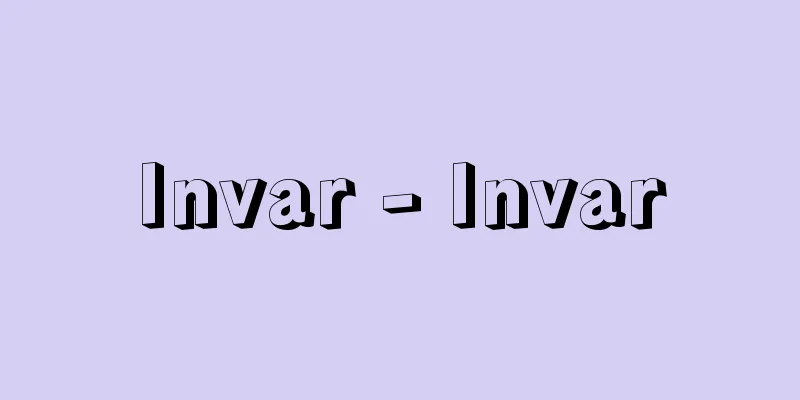Inheritance tax - death duty

|
A tax levied on assets acquired through inheritance, bequests, etc. It complements the basic income tax and has the function of eliminating the concentration of wealth from the perspective of wealth redistribution. There are two types of inheritance tax: estate tax and inheritance tax. Estate tax is a system that taxes the assets of the deceased (inheritance), and after tax is deducted from the inheritance, the remainder is divided among the heirs. The system is based on the idea that people should return a portion of the assets they acquired during their lifetime to society upon their death, and is adopted in the UK and the US. In contrast, estate tax is a system that taxes the assets acquired by heirs through inheritance (i.e. the heir's income). It aims to curb the increase in wealth due to the fortuitous circumstance of inheritance, and is adopted in continental European countries. Since its establishment in 1905 (Meiji 38), Japan's inheritance tax has adopted the estate tax system. However, in 1950 (Showa 25), the tax system was reformed based on the Shoup Recommendations (recommendations for tax reform by the US tax mission), and the system was changed to an inheritance tax system that is fair and levies tax according to the ability to bear the tax. However, the 1953 and 1958 reforms adopted the inheritance tax system in principle, while also incorporating the advantages of the estate tax, which is highly convenient for the administration of taxation. In other words, the total amount of inheritance tax was determined by the total amount of the estate, the number of legal heirs, and their legal inheritance shares, and inheritance tax was also levied on legates who acquired property from the same estate of the deceased, including all bequests. This is the current taxation system, the estate tax system based on legal inheritance shares. [Masami Nozawa January 19, 2018] Current systemInheritance tax is levied on the total taxable estate, calculated by subtracting the basic deduction (minimum taxable amount) from the total amount of inheritances, bequests, and assets given as gifts by the deceased during their lifetime (acquired under the inheritance tax settlement system) minus non-taxable assets, funeral expenses, and debts, plus the value of assets given as gifts within three years prior to the start of the inheritance (net estate amount). The inheritance tax settlement system was established in 2003, and allows presumptive heirs (children and grandchildren aged 20 or over) who received gifts from their parents or grandparents aged 60 or over during their lifetime to pay gift tax at a certain rate at the time of the gift, and then, when the donor dies (at the time of inheritance), deduct the amount of gift tax already paid from the amount of inheritance tax calculated based on the total value of the gift property and the inherited property, thereby paying the gift tax and inheritance tax. Tax-exempt property includes (1) graveyards, gravestones, altars, Buddhist implements, and other items used for daily worship, (2) items that are certain to be used by individuals who run businesses with the public interest, such as religion, charity, and academic activities, (3) the portion of life insurance money acquired through inheritance or bequest up to the amount calculated by multiplying 5 million yen by the number of legal heirs, and (4) the portion of retirement allowances acquired through inheritance or bequest up to the amount calculated by multiplying 5 million yen by the number of legal heirs. The basic deduction amount was 50 million yen + (10 million yen x number of legal heirs) when the law was revised in 2003, but was changed to 30 million yen + (6 million yen x number of legal heirs) when it was revised in 2015. The total amount of inheritance tax is calculated by applying the excess progressive tax rate, which ranges from 10% applied to the portion of 10 million yen or less to 55% applied to the portion of 600 million yen or more, to the value of each portion of the inheritance that is assumed to be inherited by the legal heirs according to the ratio of legal heirs under the Civil Code. This total amount is divided pro rata according to the taxable value of each heir and legatee, and this is the amount of inheritance tax to be paid by each taxpayer. In addition to the basic deduction amount, there are various deductions and special cases. In the case of the spouse of the deceased, the greater of the net amount of the inheritance actually acquired through division of the estate or bequest, (1) 160 million yen, or (2) the amount equivalent to the spouse's legal share of inheritance, is deducted (spouse deduction). Other deductions include a minor deduction (a deduction of 100,000 yen for each year until the minor turns 20), a disability deduction (a deduction of 100,000 yen for each year until the disability turns 85), a successive inheritance deduction (a certain amount is deducted if the deceased acquired assets through inheritance or bequest within 10 years prior to the start of inheritance and inheritance tax was imposed), and a special case for small residential land, etc. (there are special cases for business and residential use, with a 50% or 80% reduction depending on the conditions). Each taxpayer must file and pay inheritance tax within 10 months from the day after they learned of the death of the deceased. If the deceased's address at the time of death was in Japan, the tax return must be submitted and the tax paid to the tax office with jurisdiction over the deceased's address. [Masami Nozawa January 19, 2018] [Reference] | | | | |Source: Shogakukan Encyclopedia Nipponica About Encyclopedia Nipponica Information | Legend |
|
相続や遺贈などによって取得した財産に対して課される税金。基幹課税としての所得税を補完するとともに、富の再分配という観点から、富の集中を排除する機能を有する。 相続税には、遺産税estate taxと遺産取得税inheritance taxの2種類がある。遺産税は、被相続人の財産(相続財産)に課税する制度であり、相続財産から税金を差し引いた後に、残りを相続人が分けることになる。人は生前中に取得した財産の一部を死亡にあたって社会に還元すべきである、との考え方に基づく制度であり、イギリスやアメリカで採用されている。これに対して、遺産取得税は、相続人が相続によって取得した財産(=相続人の所得)に課税する制度である。相続という偶然の事情による富の増加を抑制することを目的とし、ヨーロッパ大陸諸国において採用されている。 日本の相続税は、1905年(明治38)に設けられて以来、遺産税の制度を採用していた。しかし、1950年(昭和25)にシャウプ勧告(アメリカの税制使節団による税制改革勧告)に基づく税制改正が行われ、担税力に応じた公平な課税である遺産取得税の制度に改められた。ただし、1953年および1958年の改正によって、原則として遺産取得税の制度を採用しつつ、税務行政の執行上の便宜性が高い遺産税の長所も取り入れられた。すなわち、相続税の総額を、遺産の総額と法定相続人の数およびその法定相続分によって決定することとし、相続にすべての遺贈も含めて、同じ被相続人の遺産からの財産取得者である受遺者にも相続税を負担させることとした。これが現行の課税制度である、法定相続分課税による遺産取得税方式である。 [野澤正充 2018年1月19日] 現行制度相続税は、「相続や遺贈、生前に被相続人から贈与された財産(相続時精算課税制度の適用を受けて取得したもの)の合計額」から「非課税財産、葬式費用、債務分」を控除し、これに「相続開始前3年以内の贈与財産の価額」を加算した額(正味の遺産額)から、基礎控除額(課税最低限)を引いた額(課税遺産総額)に対して課される。 上記の相続時精算課税制度とは、2003年(平成15)に創設された制度で、60歳以上の父母または祖父母から生前贈与を受けた推定相続人(20歳以上の子と孫)が贈与時に一定の税率で贈与税を納めておき、贈与者が死亡した際(相続時)に贈与財産と相続財産を合計した価額をもとに算出した相続税額から、すでに納めた贈与税額を控除することにより贈与税・相続税を通じた納税をすることができる制度である。また、非課税財産とは、(1)墓地や墓石、仏壇、仏具など日常礼拝をしているもの、(2)宗教、慈善、学術等の公益を目的とする事業を行う個人などがその事業に使うことが確実なもの、(3)相続・遺贈によって取得した生命保険金のうち500万円に法定相続人の数を掛けた金額までの部分、(4)相続・遺贈によって取得した退職手当金等のうち500万円に法定相続人の数を掛けた金額までの部分、などである。 基礎控除額は、2003年の改正時は、5000万円+(1000万円×法定相続人の数)であったが、2015年の改正により、3000万円+(600万円×法定相続人の数)となった。そして、この基礎控除額を超える部分の遺産額を、法定相続人が民法の法定相続人の割合にしたがって相続したものとした場合の各取得分の価額に対して、1000万円以下の部分に適用される10%から、6億円超の部分に適用される55%までの超過累進税率を適用して相続税の総額を求める。この総額を各相続人および受遺者の課税価格により案分した額が、各納税義務者の納付すべき相続税額となる。 上記基礎控除額のほかに各種控除・特例が設けられている。被相続人の配偶者の場合は、遺産分割や遺贈により実際に取得した正味の遺産額が(1)1億6000万円、(2)配偶者の法定相続分相当額、どちらか多い金額が控除される(配偶者控除)。その他、未成年者控除(その未成年者が満20歳になるまでの年数1年につき10万円控除)、障害者控除(その障害者が満85歳になるまでの年数1年につき10万円控除)、相次(そうじ)相続控除(相続開始前10年以内に被相続人が相続・遺贈等によって財産を取得し相続税が課されていた場合、一定の金額を控除)、小規模宅地等の特例(事業用と居住用の特例があり、要件により50%または80%の減額)などがある。 各納税義務者は、被相続人が死亡したことを知った日の翌日から10か月以内に、相続税の申告および納税をしなければならない。また、被相続人の死亡時における住所が日本国内であった場合の申告書の提出・納税先は、被相続人の住所地を所轄する税務署となっている。 [野澤正充 2018年1月19日] [参照項目] | | | | |出典 小学館 日本大百科全書(ニッポニカ)日本大百科全書(ニッポニカ)について 情報 | 凡例 |
<<: Relative price - relative price
>>: Inheritance contract - Erbvertrag (Germany)
Recommend
Inter-War Period
It refers to the 20 years between the end of Worl...
cultura de praia (English spelling) cultura de praia
…This type of agriculture is also called by diffe...
Nepenthes rajah (English spelling)
…[Katsuhiko Kondo]. … *Some of the terminology th...
American Megalopolis
…Large cities such as Boston, New York, and Phila...
Yasunobu Miyoshi
Year of death: 8/9/1221 (8/27/1221) Year of birth:...
Bobovac
…As for painting, it did not have the same intern...
Solo man
Also called Homo soloensis . A fossil human discov...
Rabdosia trichocarpa (English spelling) Rabdosiatrichocarpa
…[Murata Gen]. … *Some of the terminology that me...
Ryohaku Mountains
A mountain range that spans four prefectures: Ish...
Rice Spirit - Inadama
(Noun) (meaning the spirit of rice, derived from t...
Oyama Iwao
Year of death: December 10, 1916 Year of birth: Te...
Kiritappu - Kiritappu
This is the central town of Hamanaka-cho, located...
Vortex Pump - Kuryu Pump
...A screw pump works by rotating two or three in...
Papaver alpinum (English name)
…[Masao Yamashita]. … *Some of the terminology th...
Unzen [Hot Spring] - Unzen
This hot spring is a national health resort locate...









